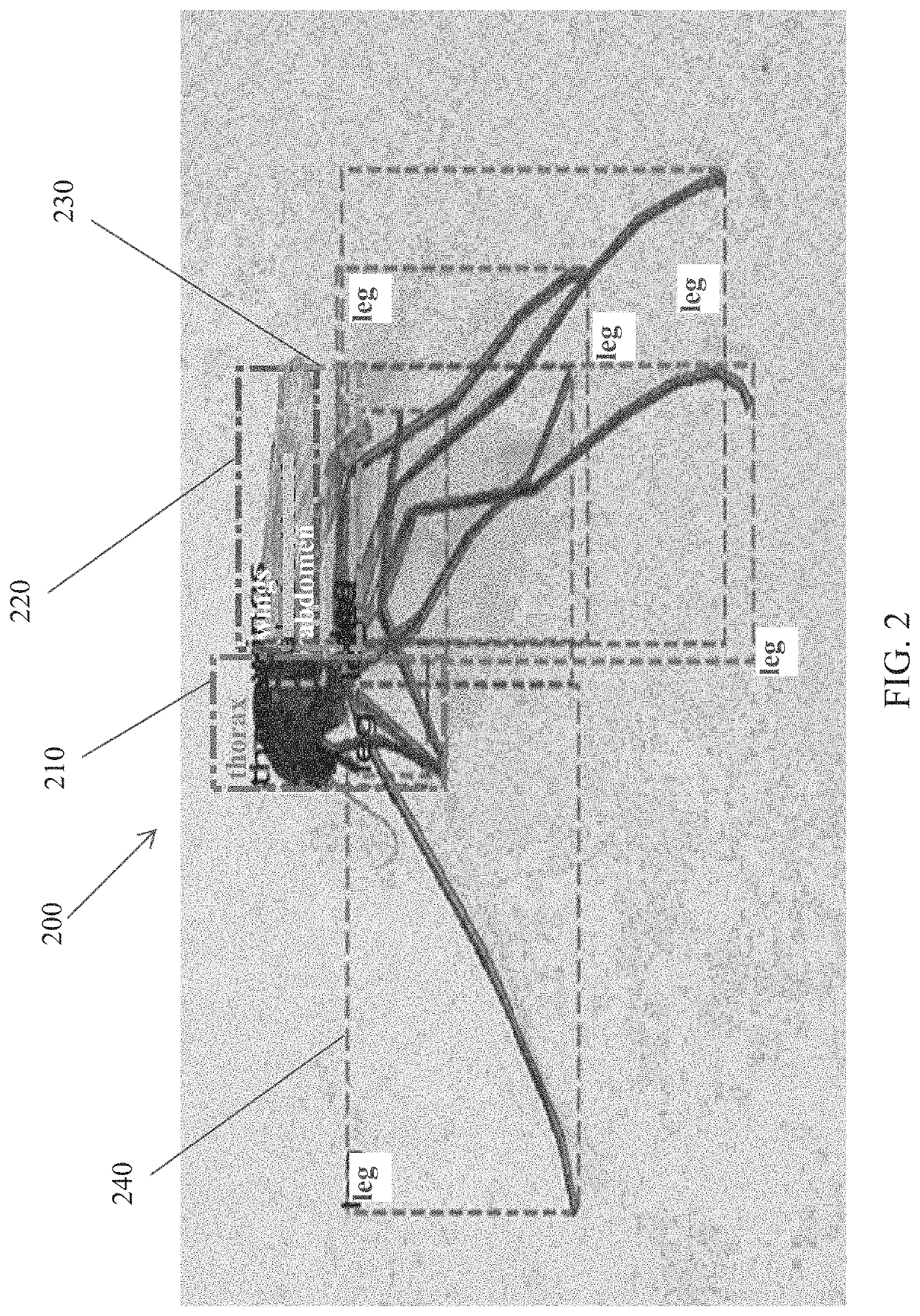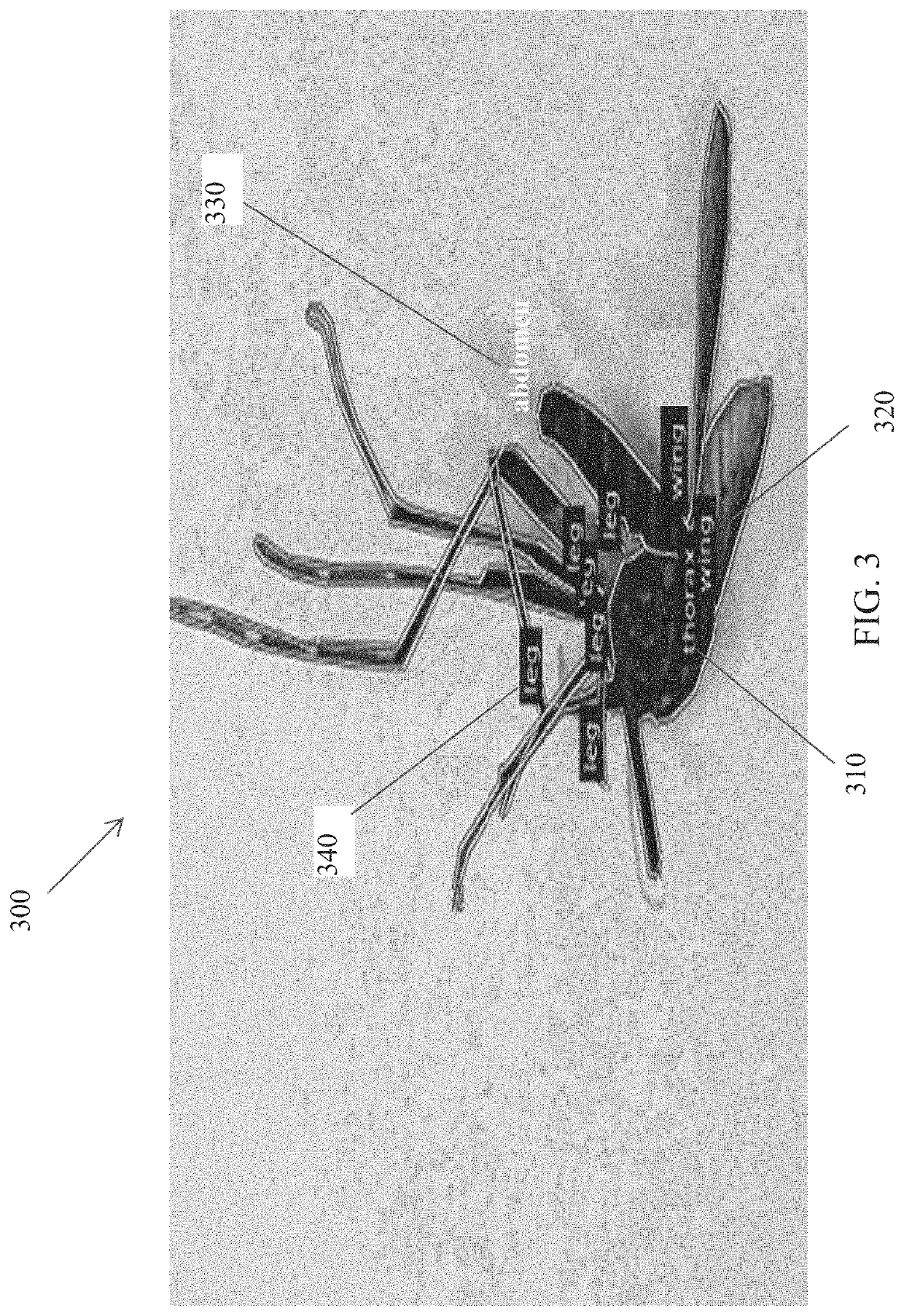Smart mosquito trap for mosquito classification
a mosquito trap and intelligent technology, applied in the field of smart mosquito traps for mosquito classification, can solve the problems of not being able to train professionals unable to identify “new” mosquitoes by local professionals, and difficult to train them to identify all mosquitoes
- Summary
- Abstract
- Description
- Claims
- Application Information
AI Technical Summary
Benefits of technology
Problems solved by technology
Method used
Image
Examples
Embodiment Construction
[0037]This disclosure presents the hardware design of a smart-mosquito trap that will automatically capture images, videos and wing-beat frequencies of mosquitoes that get trapped. Once the digital data is made available artificial intelligence (“AI”) algorithms, such as those shown below, will be executed to identify the genus and species of the trapped specimens. This disclosure presents the design details and prototype implementation of a smart mosquito-trap that can use any attractant (CO2, Light, Human Sweat, Animal Odors, Lactic acid, etc.). The trap is embedded with the following components that make it unique a) a digital microphone / passive infrared sensors (PIR) at the entrance of the trap to sense wing-beat frequencies and size of the insect (i.e., to identify entry of a mosquito); b) a lamb-skin membrane filled with CO2 with gas air inside that mimics human skin so that the mosquito can rest on the membrane to pierce as if the mosquito is could actually consume blood; and...
PUM
| Property | Measurement | Unit |
|---|---|---|
| angles | aaaaa | aaaaa |
| frequency | aaaaa | aaaaa |
| wingbeat frequency | aaaaa | aaaaa |
Abstract
Description
Claims
Application Information
 Login to View More
Login to View More - R&D
- Intellectual Property
- Life Sciences
- Materials
- Tech Scout
- Unparalleled Data Quality
- Higher Quality Content
- 60% Fewer Hallucinations
Browse by: Latest US Patents, China's latest patents, Technical Efficacy Thesaurus, Application Domain, Technology Topic, Popular Technical Reports.
© 2025 PatSnap. All rights reserved.Legal|Privacy policy|Modern Slavery Act Transparency Statement|Sitemap|About US| Contact US: help@patsnap.com



